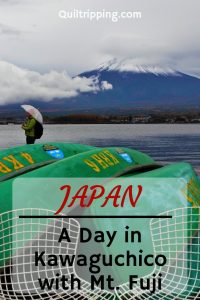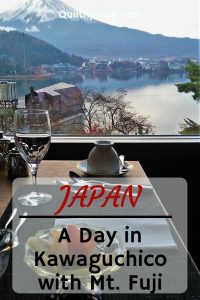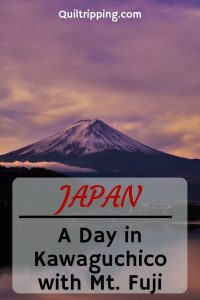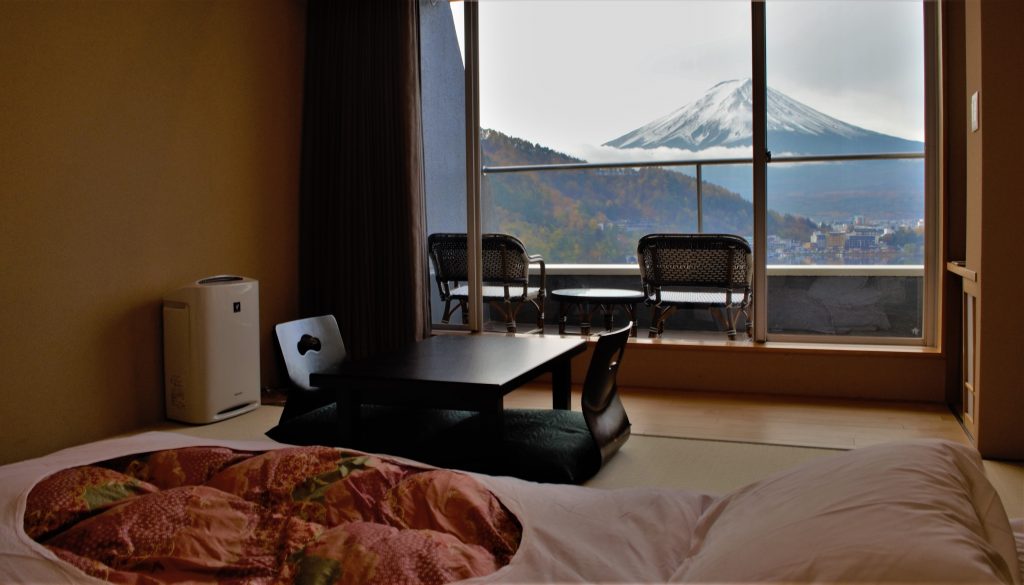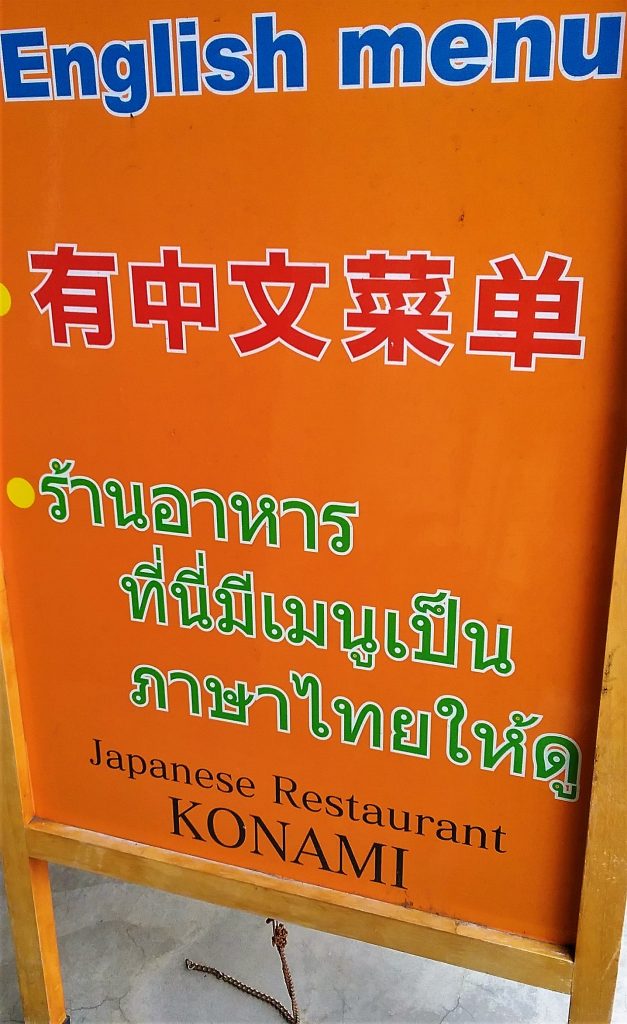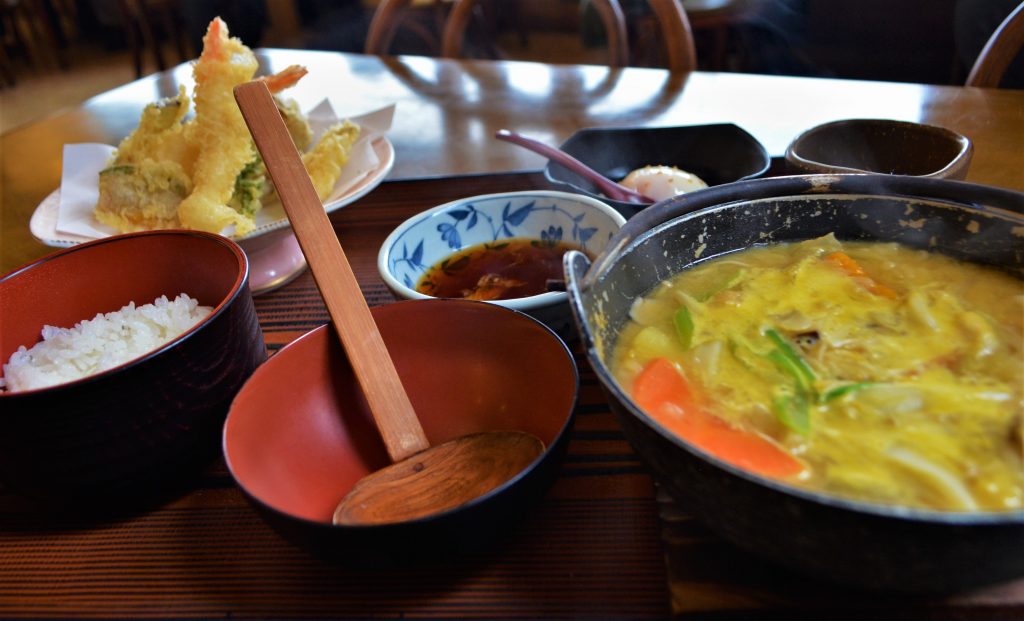Last Updated on 11/17/20 by Rose Palmer
I was on a mission. I was in Japan again for the third time in two years, and I wanted to see – and photograph – the perfect cone shape of Mt. Fuji. I hoped that on my planned one day Kawaguchiko itinerary, I would get my wish.
The graceful curves of a Geisha wearing a kimono. The rotund shape of a groaning sumo wrestler. The stately orange beams of a torii gate. An artistic plate of freshly caught sushi. The large eyes of a manga cartoon charter. The serenity of a perfectly raked gravel rock garden.
I don’t know if there is another country that has so many single identifiable images associated with its culture. All of these images speak the word Japan as clearly as if it were yelled from the mountain tops. But if there is one iconic image that stands high above the rest when it comes to symbolizing the soul of Japan, it is Mt. Fuji.
On a global scale, Mt. Fuji’s 12,389 ft. is not particularly tall, but it is Japan’s tallest mountain, or rather, volcano. Scientists still classify Mt. Fuji as an active volcano, though it is listed as having little chance of eruption. The last time this icon spewed out fire and ash was over 300 years ago in Dec. 1707.
Besides its height, Mt. Fuji’s practically perfect symmetry naturally appeals to a human brain that constantly strives to create order out of chaos. Couple that with unobstructed views of its cone from as far as 100 miles, along with the ancestral Japanese Shinto religion which reveres mountains, and it is not surprising that Fujisan has come to represent the Japanese psyche.

It is also not surprising then that this mountain captures the tourist psyche as well. A visit to Japan would not be complete without even the slightest distant glimpse of the snow capped peak. A perfect photo would be even better.
In my three trips to Japan in the last two years, I have tried for that postcard perfect shot of Mt. Fuji. This is harder than it sounds, because as with many tall mountains, Fuji makes its own weather, and a short day trip in good weather from Tokyo is not necessarily a dependable option for great mountain photos (as I found out). So, on my fall trip to Japan, I decided that to increase my chances of an Instagram worthy picture, I needed to stay overnight within view of the elusive peak.

My research found many attractive options in the five lakes region at the base of Mt. Fuji. The area is popular for outdoor recreation and overall general fun. The most developed of the five lakes and also the easiest to reach by public transport is Lake Kawaguchi. In two hours, an early morning bus whisked me from Tokyo Station to Kawaguchico station and the towering views of Japan’s favorite mountain – that is, when it’s head wasn’t in the clouds.

My Kawaguchiko Itinerary
Accomodations
The shores of Lake Kawaguchi are dotted with many hotel, ryokan and onsen options. But, I was going in mid November during peak fall foliage season, and I had a surprisingly difficult time finding a reasonably priced hotel when I started the booking process in early October. Note to self – book earlier next time.
I like to use Hotels.com to book accommodations because I get one free night for every 10 nights that I book through them. I then use the free night to bring down the cost of a luxury stay to an average price, which is what I did for my hotel in Kawaguchico. I chose the Mizuno hotel for its location higher up on the hillside overlooking Lake Kawaguchi and for its onsite onsen facilities. I also decided to give a Japanese style room a try and picked one with a balcony view looking out toward Mt. Fuji.
As befitting a minimalist culture, the Japanese style room only had a low table and chairs and a TV in the way of furnishings. In the evening, a hotel attendant came in and set up a futon mattress with sheets and comfy pillows and a down comforter. Though I have to admit that while the bed was comfortable to begin with, by morning, I was a little sore from sleeping on the floor. But the view of Lake Kawaguchi and Mt. Fuji could not be beat. I enjoyed a wonderful, if somewhat cold and cloudy sunrise view of Japan’s favorite mountain while sipping a hot cup of tea on the balcony.

A delicious breakfast was included with the room, and was served in their dining room which also overlooked the lake and the mountain. The service was incredibly attentive and efficient, which I have come to realize, is typical in Japan.
I also gave the onsen facilities a try. I was a little apprehensive about this since I would have to go into the onsen bath in my birthday suit and not a swimming suit. But after breakfast most everyone was checking out, and the bathing facility was empty, so I had it all to myself.
I made sure to follow proper Japanese onsen etiquette, which meant a thorough scrubbing of all body parts and nooks and crannies before going into the bath. The hotel provided plenty of fragrant soap and shampoo options, wash cloths and towels. The hot soak was indeed very relaxing, and with the views of Mt. Fuji, it became a very memorable experience.
When it was time to leave, the hotel provided complimentary shuttle service back to the train station (they had also picked me up at the train station). In fact, the management went out of their way and made a special shuttle run just for me so I could catch the 10:30 bus back to Tokyo. That is good service indeed.
Food
At the base of the hill where Hotel Mizuno was located, was a little restaurant that served up the local traditional dish – Hoto noodles. While these noodles look like typical Japanese udon noodles, they are made more like dumplings than noodles so have a heartier consistency. I ordered the set meal with hoto and tempura which was perfect for the wet, cold rainy day. The soup, which was filled with local seasonal vegetables, was warming and filling.
Activities
I went to Kawaguchico for views of Mt. Fuji, but the town has developed into a resort area, so there were quite a few sight seeing options as well. I chose to walk along the lake front from the hotel into the central part of town, but I could also have taken a local bus. I poked my head into the Kawaguchico Museum of Art and passed the Kawaguchiko Music Forest which is a garden and museum dedicated to western musical instruments. I had my sight seeing sights set on the Itchiku Kubota Art Museum.
Itchiku Kubota had the honor of being the first artist to have his work shown at the Smithsonian in Washington D.C while he was still alive. Kubota made his name as an artist through reviving a long lost technique for dying and decorating textiles used in making highly elaborate kimonos. His museum displays some of the 104 kimonos from his collection (no indoor photos allowed unfortunately).
The kimonos are nothing like those you might have seen in photos worn by a geisha. These are intricately detailed artistic masterpieces that blend delicate colors and shapes into subtle images. The fabrics for each piece are dyed to a specific design in a labor intensive process. The work is all done by hand and takes many months and many hundreds of hours to complete. The museum has a very nice English language documentary that describes his fabric dying and crafting process. You can get more information and see photos of his amazing works here.
The museum and gardens were also designed by him and are also works of art. Even though it was raining, I explored the grounds that glowed with Japanese maples in their fall glory. Afterward, the on site café was a warm spot to relax and look out into the perfectly laid out garden while sipping a cup of green tea.
It turned out that during the month of November, Kawagushico also holds a fall foliage festival with food stalls, craft vendors and music. This brings in bus loads of Japanese tourists to photograph Mt. Fuji framed by the red maples. It was fun to walk through the festival venue. The food stalls may have been a little different, but it had the same party feel as a festival back home. The town also has a long section of maples called the “maple corridor” that was at peak color while I was there and that was packed with wall to wall people taking photos.


I went to Kawaguchico in search of a perfect Mt. Fuji photo. The weather did not cooperate very well, so I may or may not have succeeded, but in the end it did not matter. I left Kawaguchico with a collection of memorable new experiences. I tried my first onsen bath. I saw the work of one of Japan’s great artists. I explored a fall festival with the locals. And I have a memory of seeing the sun rise over Mt. Fuji. These experiences continue to reinforce why I love to travel – to stay open to and enjoy the challenge of doing something I have not done before.
How to get from Tokyo to Kawaguchiko
Since I was staying near Tokyo Station, it was easy and convenient for me to take the bus from Tokyo Station directly to Kawaguchiko. For various options on how to get to Kawaguchiko, please check out https://www.japan-guide.com/e/e6905.html.
To read more of my stories from my trips to Japan please go to https://quiltripping.com/category/travel/asia/japan/
Thanks for visiting.
Rose
Pin this!
